
The best way to handle new technology being introduced to the education world is to investigate the tools for ourselves, with an open mind, rather than getting caught up in fear and overwhelm. I know this is hard to do, believe me, I’m a fairly neurotic, anxious person. But, as an English teacher, it is our job to teach students how to utilize critical thinking, be open minded, and organize all the information coming at us in a cohesive manner.
It’s our job to model this kind of behavior.
Yes, our initial feelings may be that of fear and overwhelm and even defeat. Many teachers are feeling like their jobs are going to be replaced by machine learning and a chat interface. In my opinion though this new chatbot won’t ever replace the importance of a human being in the classroom or the beauty and creativity that comes from human language.
It is not the end of high school English as this article purports. It may however be the death of the college essay, but I’m personally okay with that. Check out part one of this series to find out why. You can also check out part two of this series about my ideas for how to prevent students from using this tool to do their work for them (and what to do if they do anyway).
I believe chatgpt is a powerful tool that students and teachers can use to their advantage. For example, you can speak to it in a conversational way as a class. However, it can produce harmful outputs. It can answer questions with incorrect information and even produce biased content if asked questions probing about certain topics. Students need to be alerted to the fact that it can produce wrong answers. We have to help students become informed about these things, because if we don’t, many students will be misinformed and misguided, they could take what the ai says for face value. Our students are vulnerable and need our wisdom and guidance. A lot of people believe teachers should steer clear of this tool, I’m not one of them. New tools like this have to be discussed and taught about in this new technological era.
I don’t think teachers should ignore the existence of this tool, or feel like if they talk about it, their students will then commit academic fraud. It would be a mistake to ignore the emergence of chatgpt because students are definitely going to discover it sometime soon (if not already), and we need to be ahead of the curve so we can guide students to understand the tool more fully. I say, have fun with it, let’s use the power of ai to enhance our classrooms! It’s a new world and similar technology is headed our way very soon. Here’s are some ideas for how you can start the conversation with your students.
Facilitate an Open-Ended Discussion
Middle, high, and especially college students are very much privy to the newest technologies available to them. I’m sure many have already begun playing with chatgpt over their winter break. If teachers ignore this, the technology will seep into their classrooms whether they want it to or not (think fidget spinners, water bottle flipping, and Rubiks cubes).
It’s best to get ahead of these these trends so we can find out what students are thinking and establish ground rules, and teach necessary lessons. I’d recommend starting off with some open-ended questions:
- Have year heard of the new artificial intelligence chatbot Chat GPT?
- If you’ve heard about it, what do you know about it? Have you tried it? What did you think about it?
- How do you think the emergence of Chat GPT will impact education?
- Do you have ideas about how it might improve education?
- What do you believe are the potential positive and negative consequences of ai chatbots?
- How might it be used as an educational tool?
It’s important to listen to what your students are thinking and ask followup questions rather than begin lecturing them during discussions like this. If teachers listen, they can learn a lot from their students and it serves as a way to build strong bonds between teachers and students. If students feel safe in your classroom, they will be more honest and open with you, and that is exactly what teachers need in order to prevent academic dishonesty and plagiarism in our classrooms.
This helpful blog post includes 15 ways to make these kinds of discussions more meaningful.
Teach About Ethics & Plagiarism
Now, more than ever we need to dedicate time to teaching and learning about these topics. The best place to start is by defining key terms. Use these posters to help. They include the definition of the key terms, pictures and examples.
After, ensuring students understand the key terms, discuss how they know the difference between right and wrong. Is it a feeling they get? Or do they think that right and wrong are instilled in us from outside forces like parents, teachers, administrators, our communities, or society? Or maybe a combination?
All of this is debatable, no one really knows the true answer to these questions, just like no one really knows how much of nature versus nurture determines how children turn out as adults.
Next, give students some ethical dilemmas to ponder. Have students write their responses and then discuss their answers in small groups. Below are some dilemmas that chatgpt came up with.

Finally, talk to students about plagiarism. The best strategy is to be transparent and honest with them. Tell your students that you have been experimenting with Chatgpt and are aware that it might be tempting for them to use it to do their work. But, you trust them to make the ethical choice and not give in to that temptation. Explain that if they do, they run the serious risk of getting caught and facing the consequences. Affirm that you know your students’ writing very well and have tools that can help you deem if a piece of writing has been generated with the help of artificial intelligence (see part two of this series for ideas about tools you can use).
Facilitate a Philosophical Chairs Debate
The use of ai to produce writing for us is a very controversial issue that I’m sure many students would enjoy debating. But, there are also a wide range of topics that can be debated with gpt-3 technology as well. One of my favorite ways for students to debate is called philosophical chairs.
Here’s how it works:
1. Provide students with background knowledge about the topic to be debated. This article delves into the many layered issues of the use of chatgpt in educational settings.
2. Provide students with a controversial statement-teachers should allow students to collaborate with artificial intelligence tools for their writing assignments.
3. Have students write whether they agree or disagree with the statement their reasoning and provide some evidence from the article to support their position.
4. Set up about seven chairs in a row for the agree side and another set of chairs on the disagree side of the class room. Have five volunteers for each side sit in the chairs. The empty chairs are for students who choose to switch sides during the debate.
5. Call on individual students from each side to share their opinions. After each student speaks allow students sitting in the chairs to switch sides and if they do, explain what persuaded them.
6. Students who aren’t in chairs are just observers but can participate in a second or third round with a new statement or keep the statement the same if it seems there is a lot to say on the topic.
Run an Experiment
I participated in pilot program last year to implement grading for equity practices with Joe Feldman’s Crescendo Group. I learned a lot and was introduced to a brand new way of teaching that involved choosing one educational practice to experiment with.
I chose how I was going to collect data about the impact of this new educational practice on my students’ learning. I collected qualitative data via student feedback about the experience and qualitative data via assessments I administrated.
At the end of the experiment I drew conclusions about whether the tool helped or hindered learning.
I went through this experimentation cycle four times throughout the year, testing the impact of retakes, revision lessons, and the 50% floor. It was an extremely beneficial practice because I was able to determine if what I was doing was making an impact or not. Teaching often involves experimentation. The goal is for our students to be engaged, learning, and growing.
If your school and district allows it, why not approach chatgpt and artificial intelligence tools in this way? I’d be very interested to see what comes of this kind of experimentation in classrooms.
Have Fun with It
Instead of fearing this tool, why not harness it for fun? Here are some ways (straight from ChatGPT) that you can have fun with the the chatgpt chatbot:

Wrap Up
In order to talk to your students about artificial intelligence tools like chatgpt, it’s a good idea to play with the tool yourself first. You can create an openai account for free here.
At first glance fear, anxiety, and uncertainty are sure to make their way to the surface as you learn more about what this tool can do. But, don’t let that fear stop you from talking to your students about it. After familiarizing yourself with it, and pondering it for as long as you need, there are ways to talk to your students about it and creative ways to harness this tool in your classroom too.
It’s best not to ignore this for too long. Start out with some open ended questions, listen to what students have to say. After the discussion, facilitate a philosophical chairs debate, and then teach important terms about ethics and plagiarism with these posters. This is a useful tool if we approach it with a critical lens and teach students how to use their critical thinking skills when using it too. Ignoring it would be missing out a very real world opportunity to teach students how to think critically, debate, write, revise, and harness the tool for good.
I hope this article has helped you think about ways to get started with the challenging work you have ahead helping students navigate this wild and fast paced technological world.
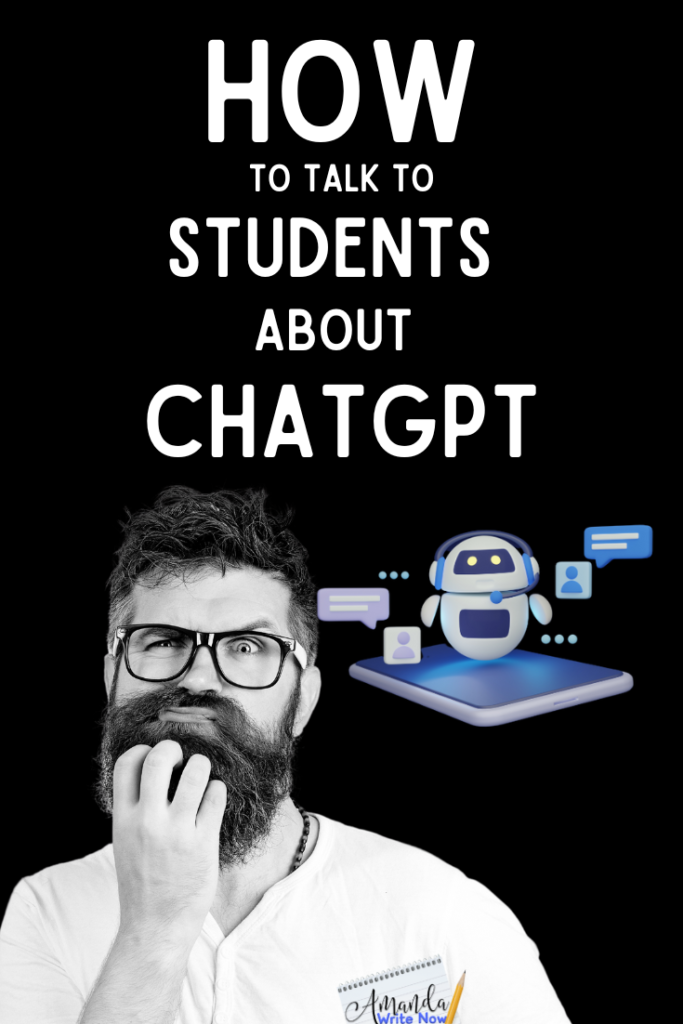
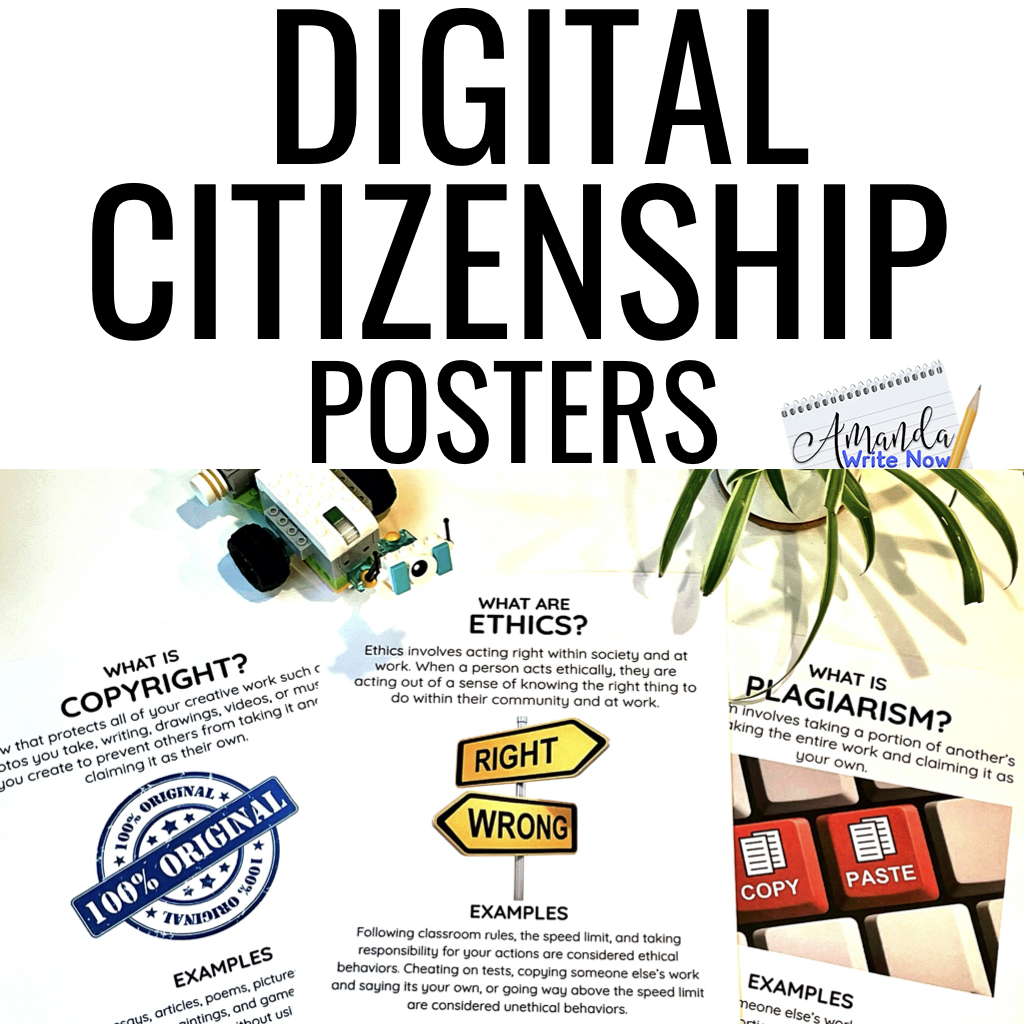
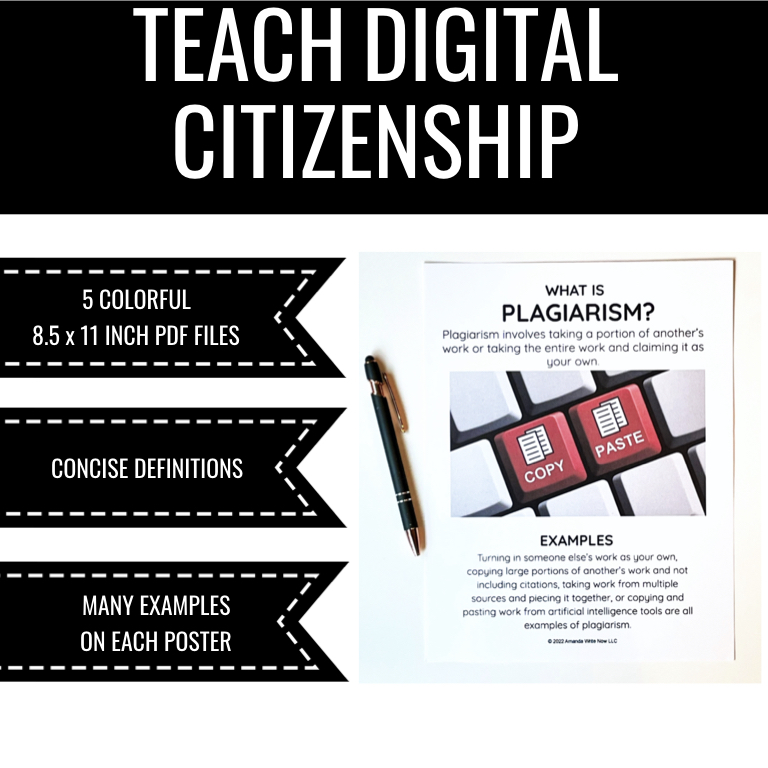


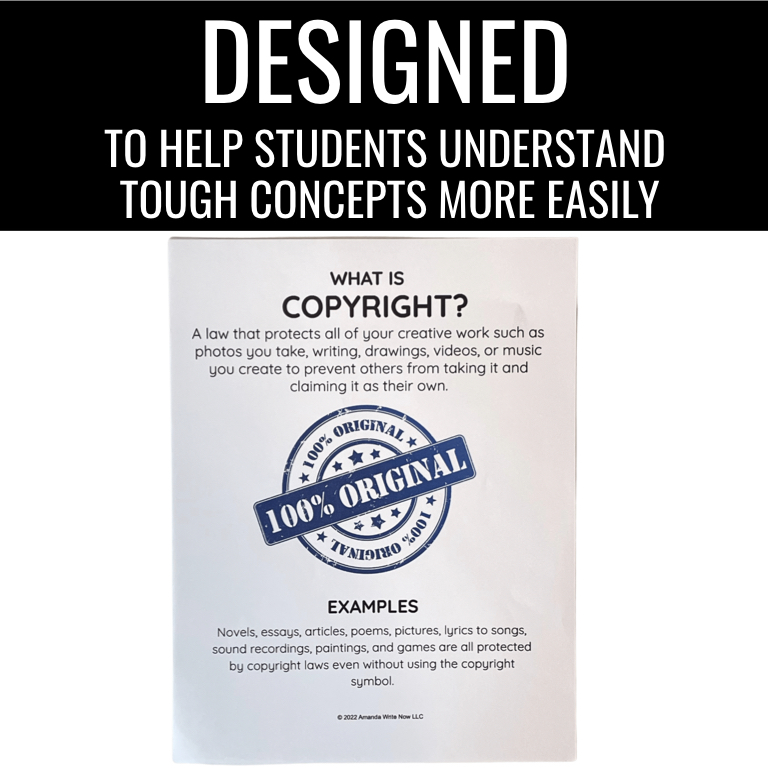
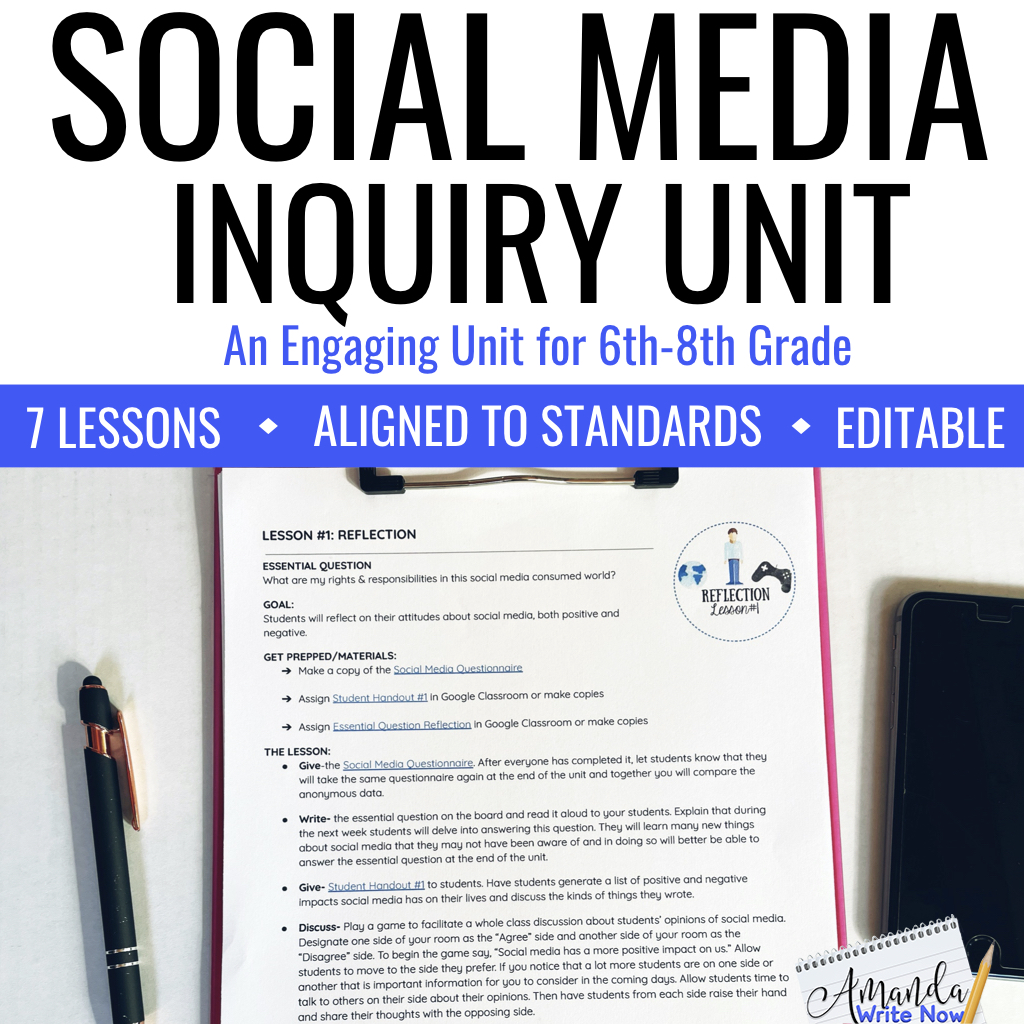








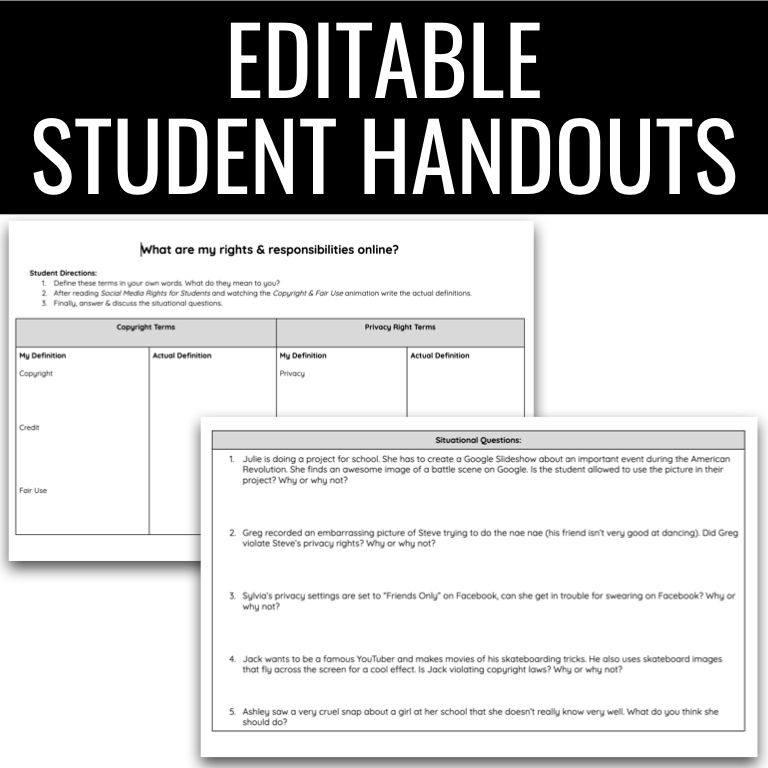



0 Comments